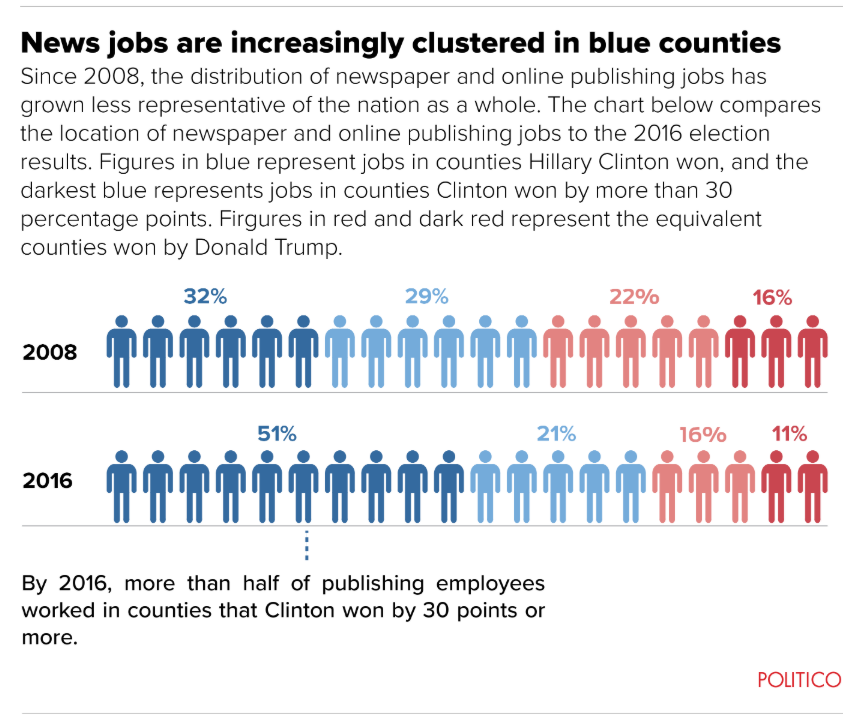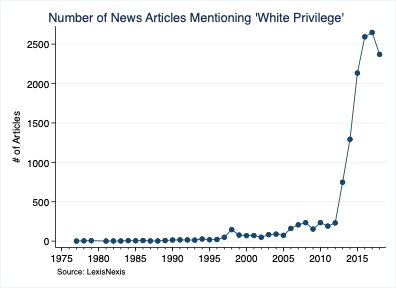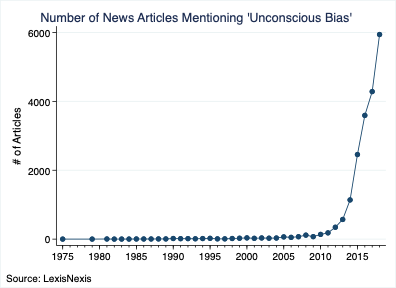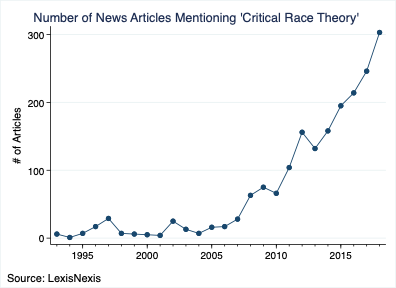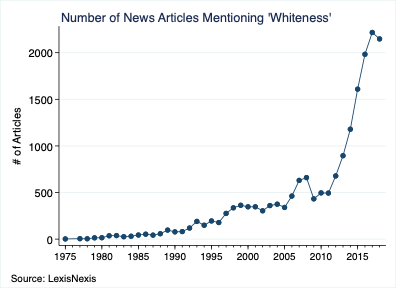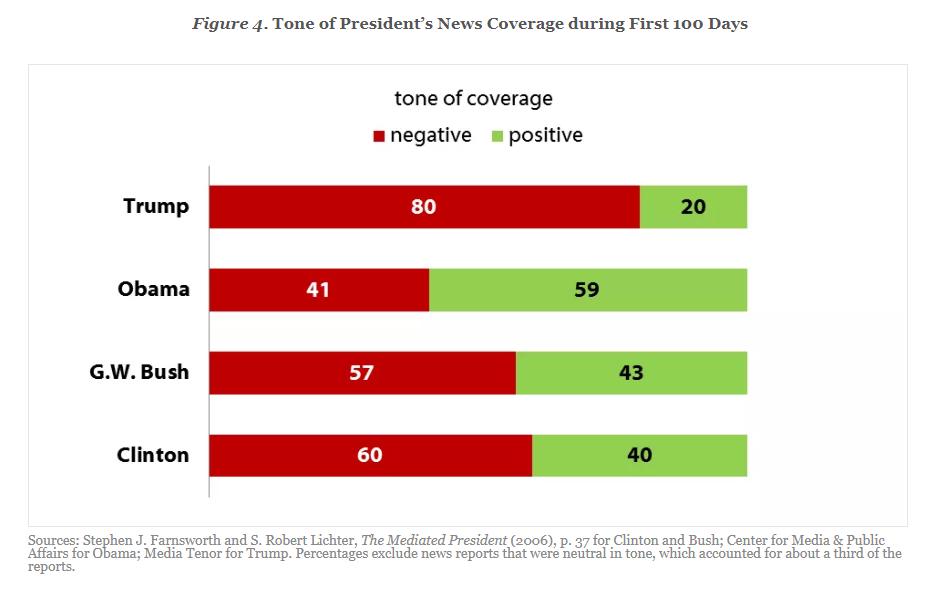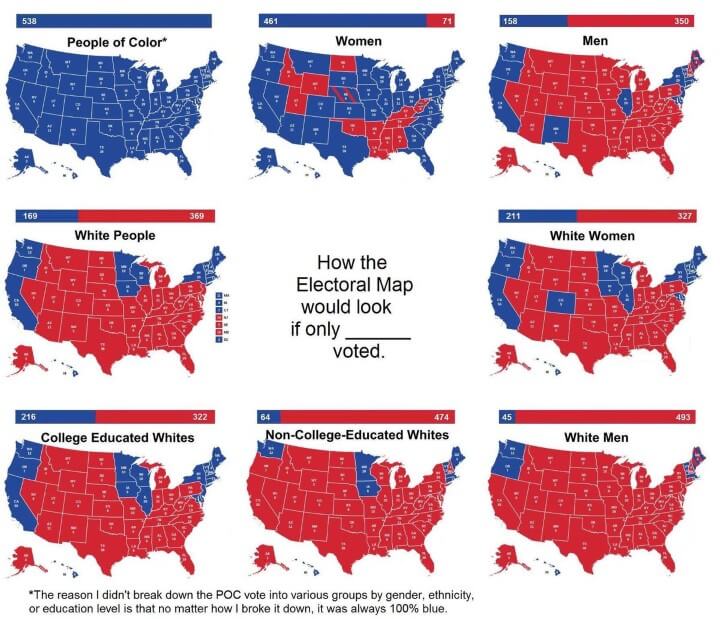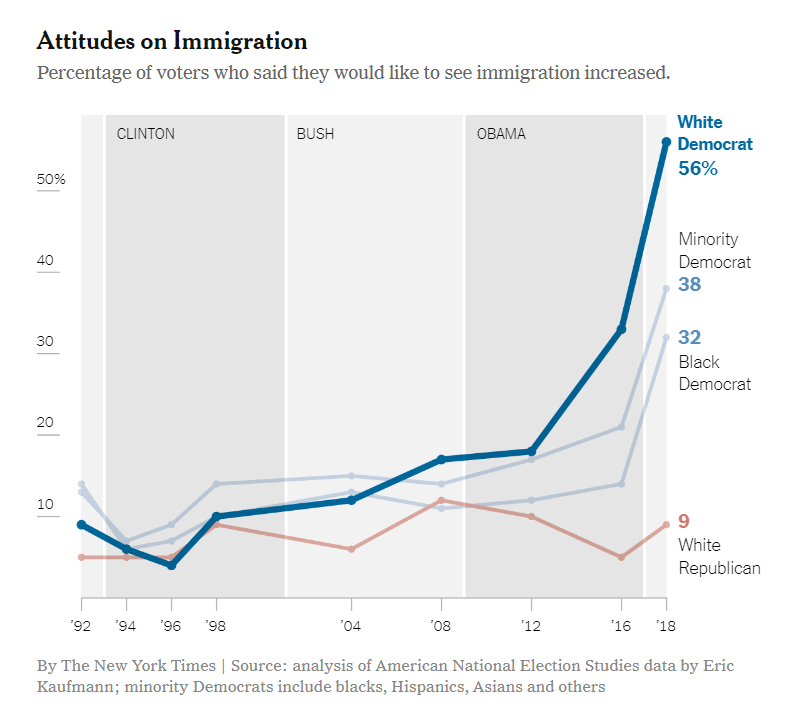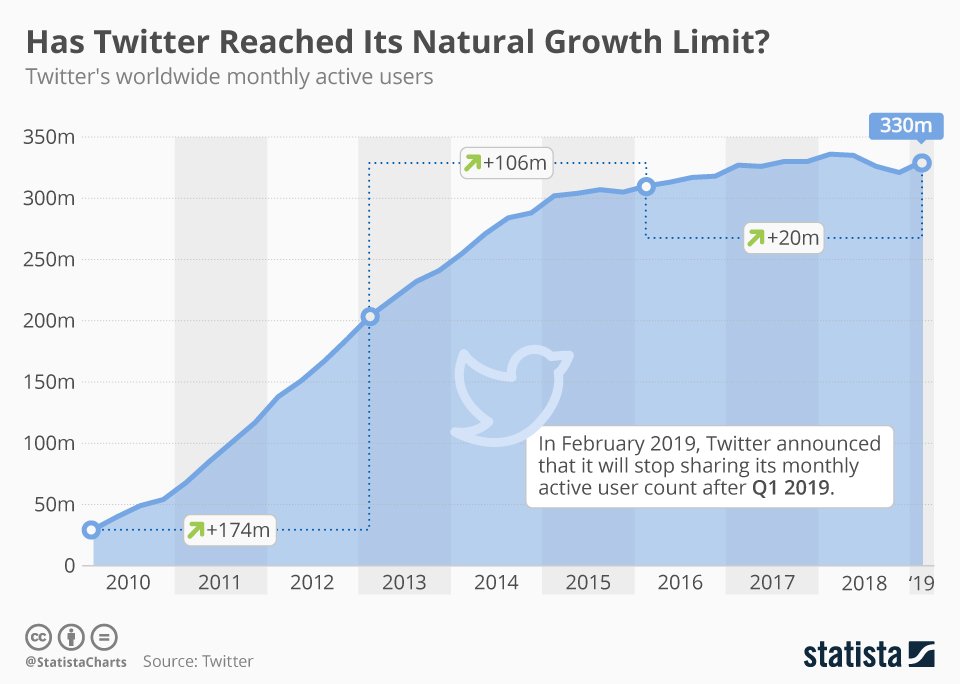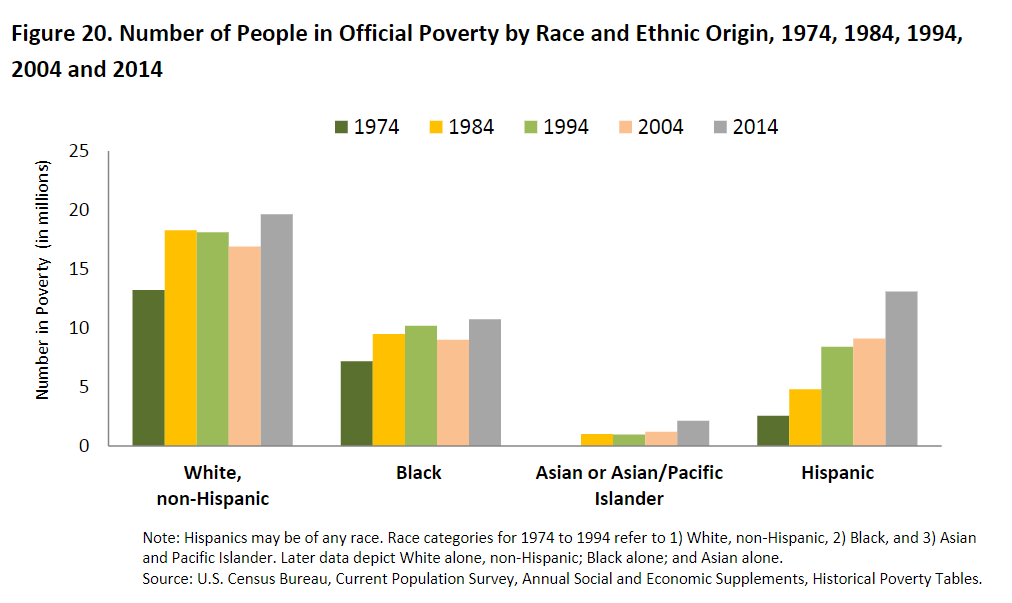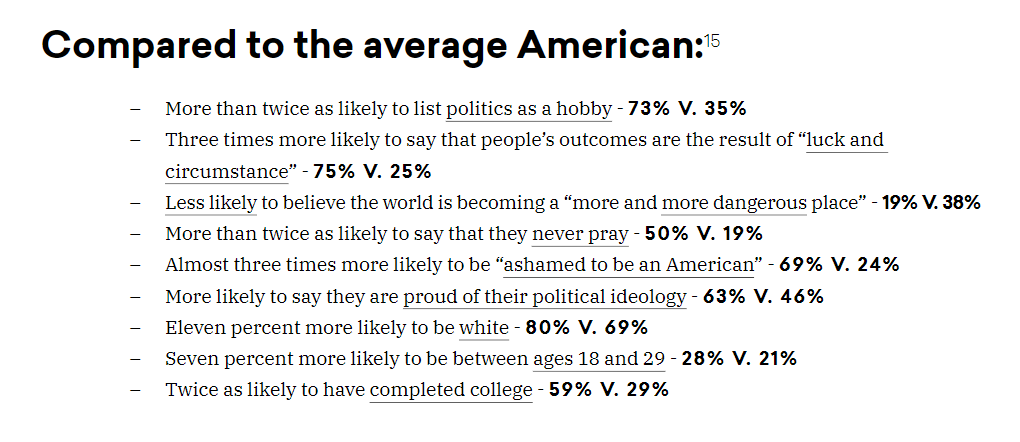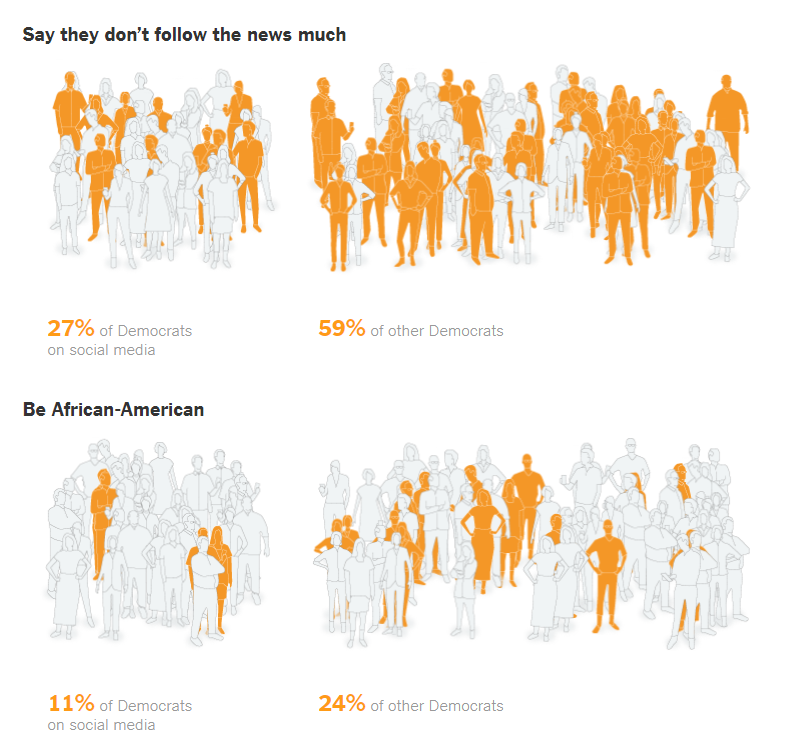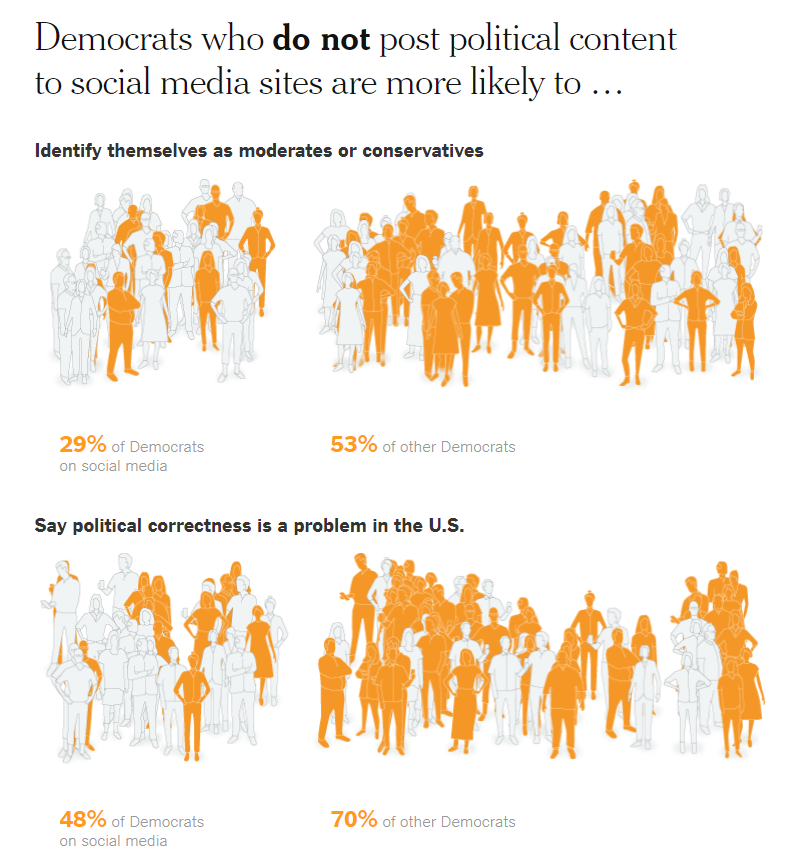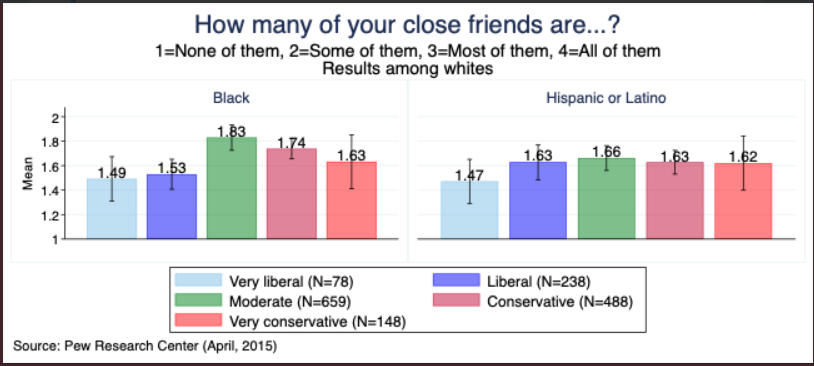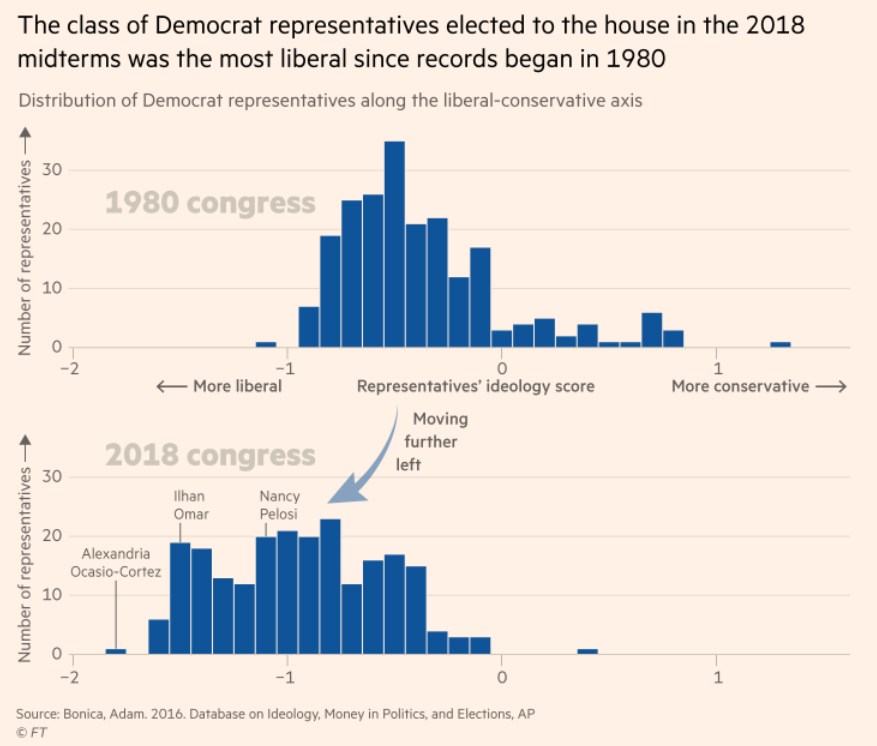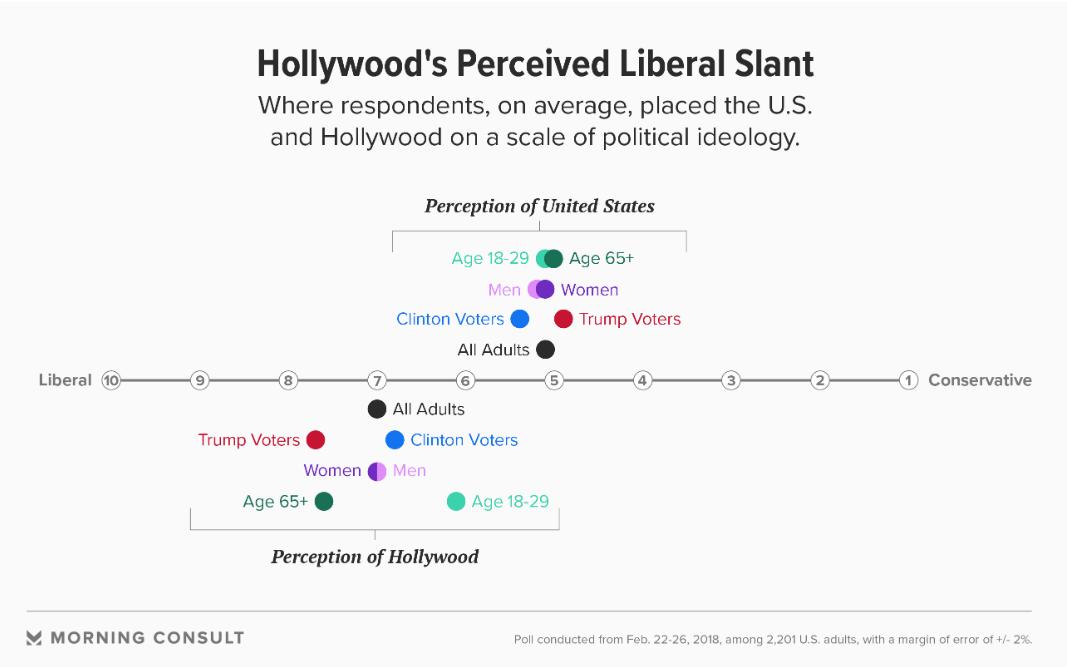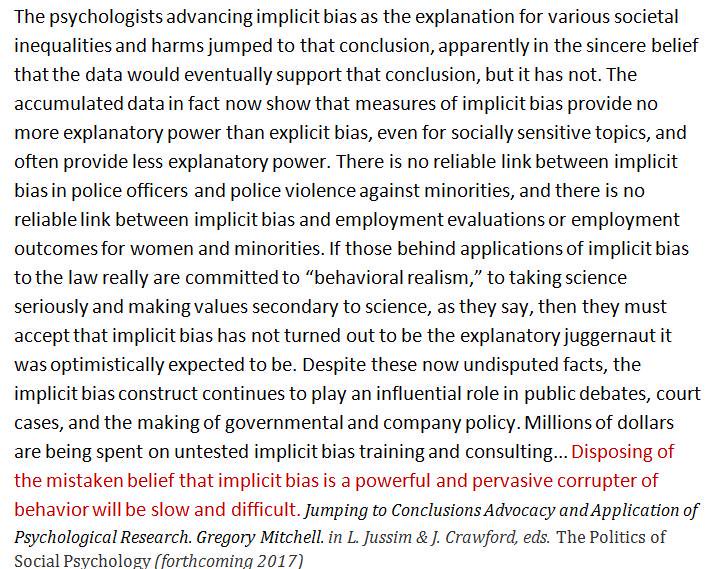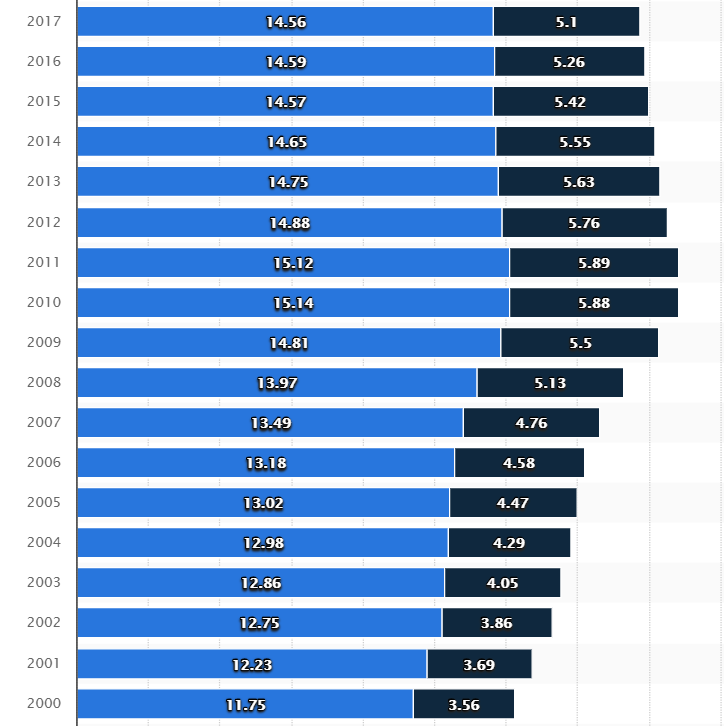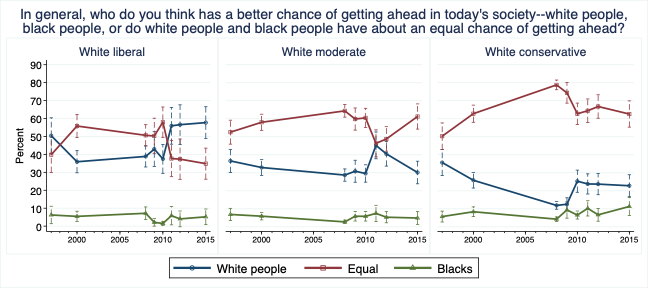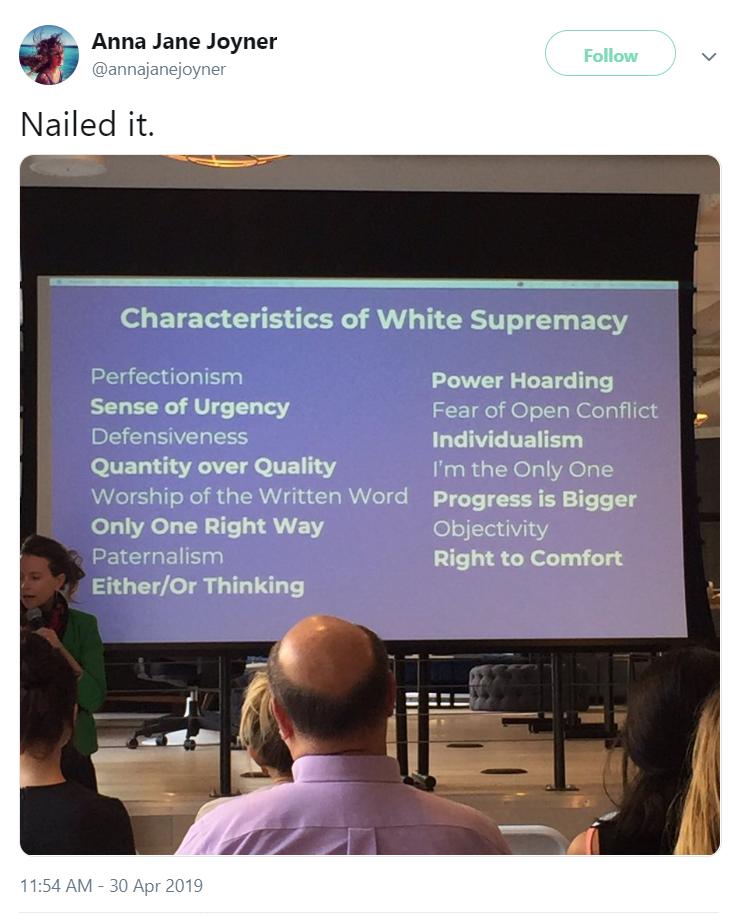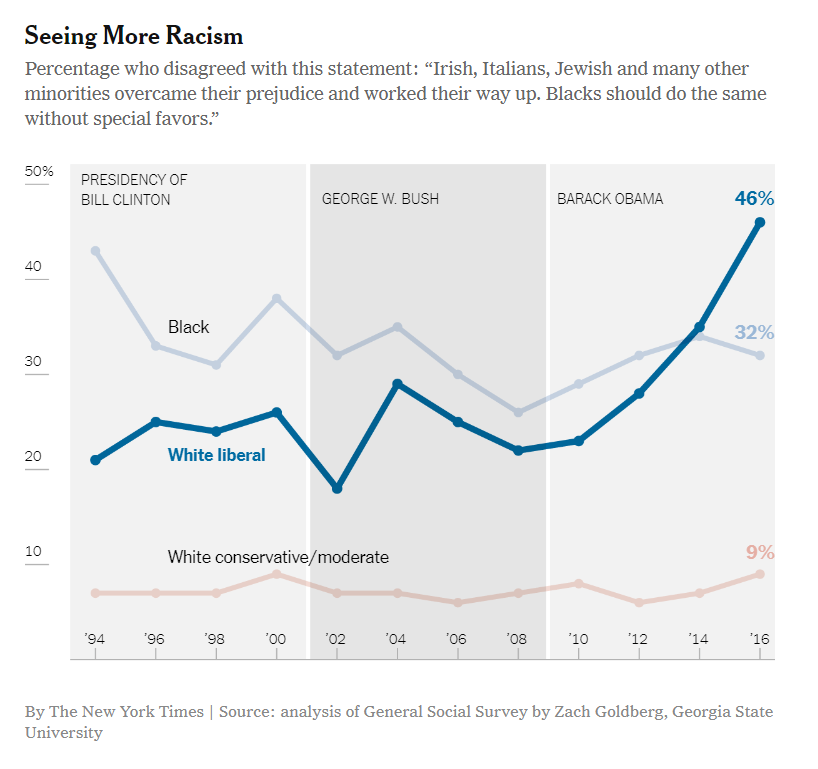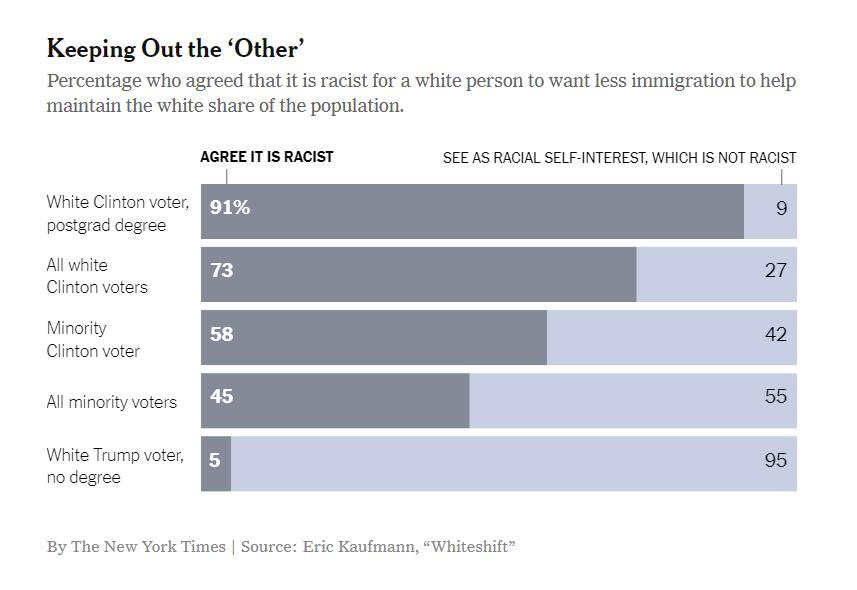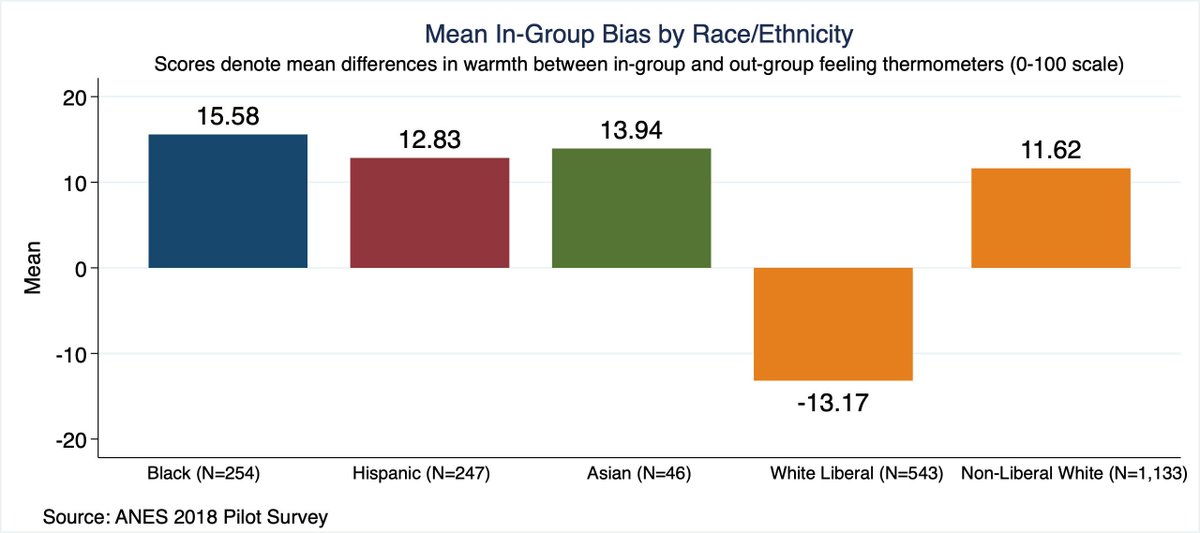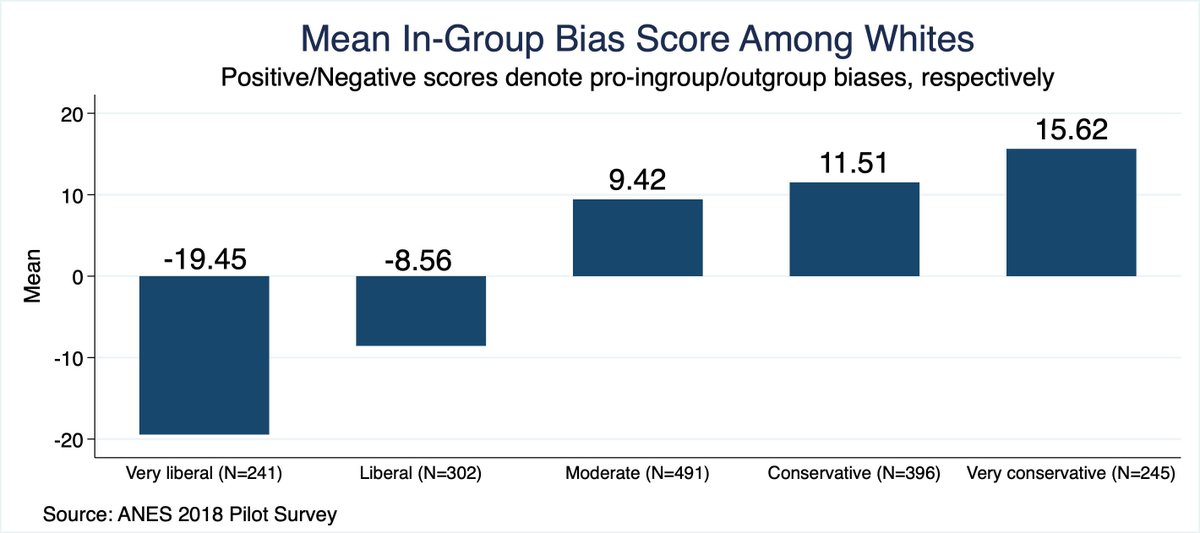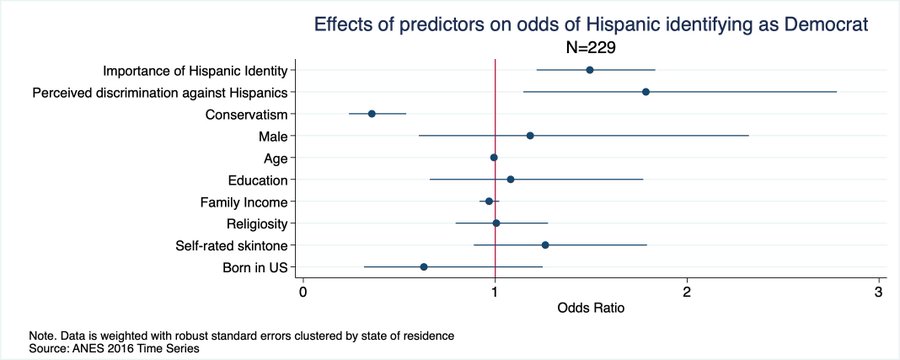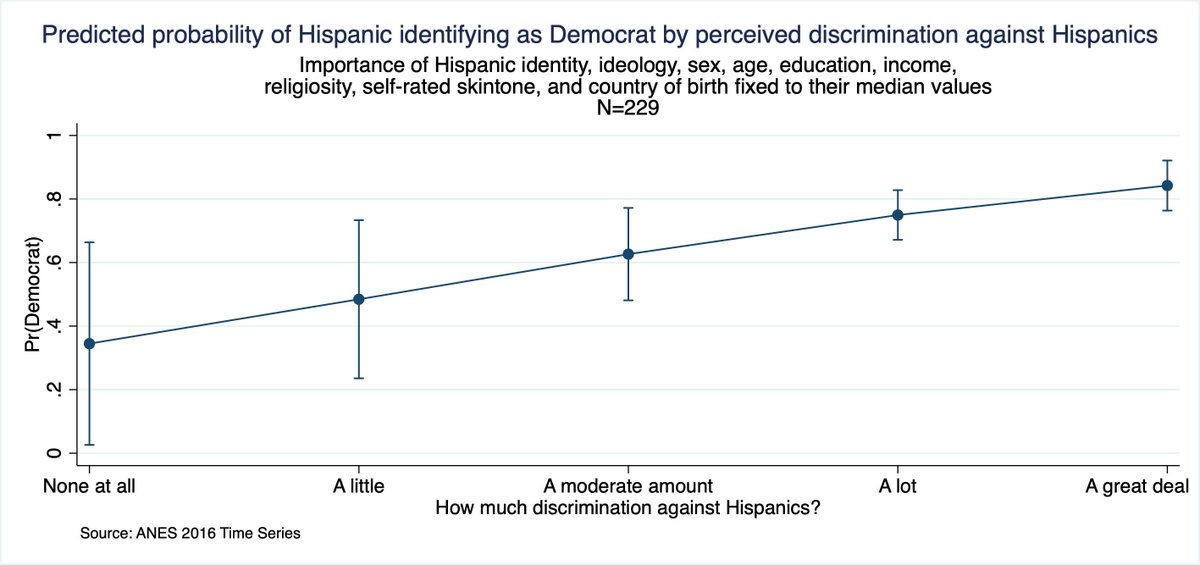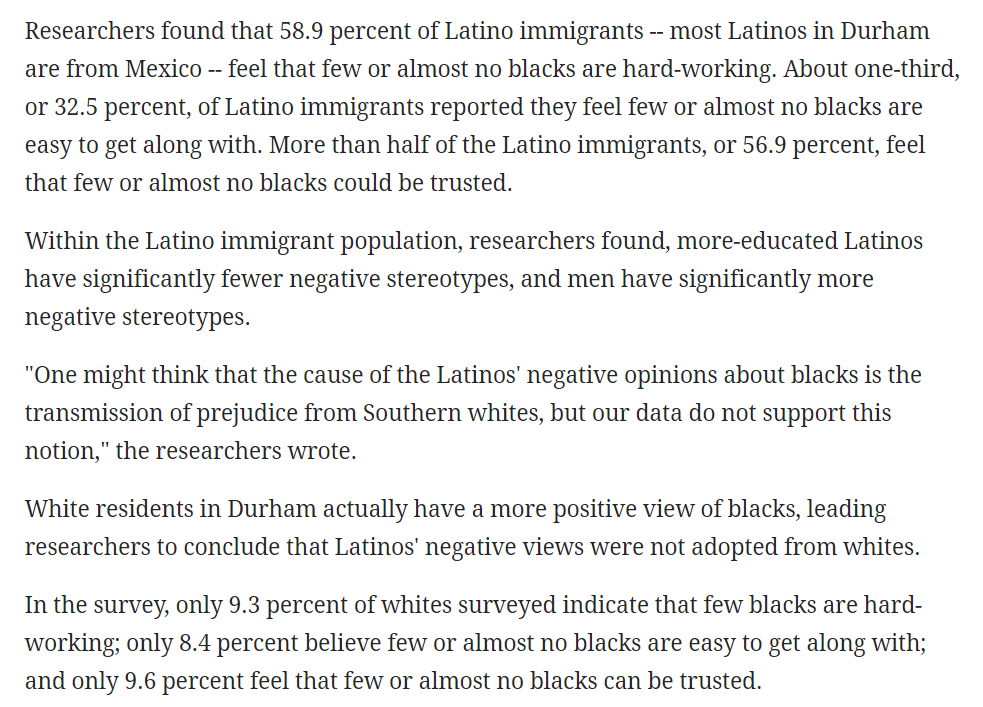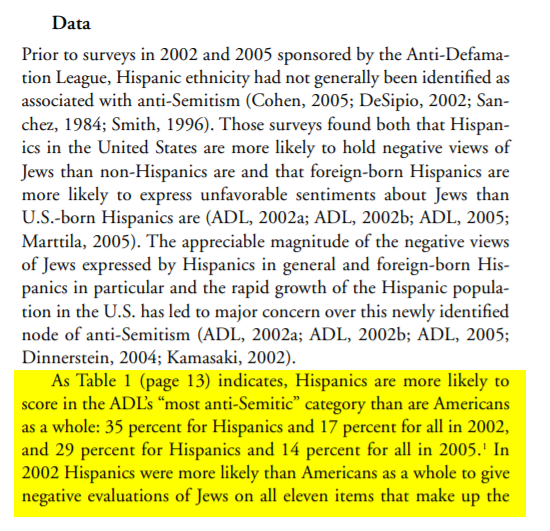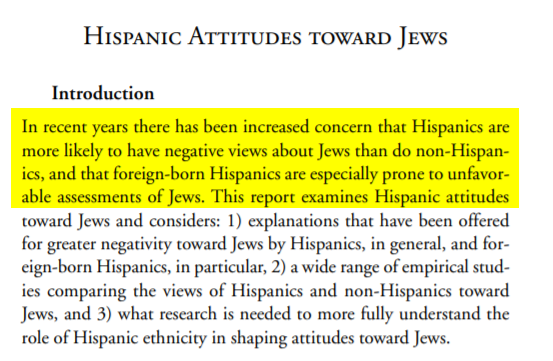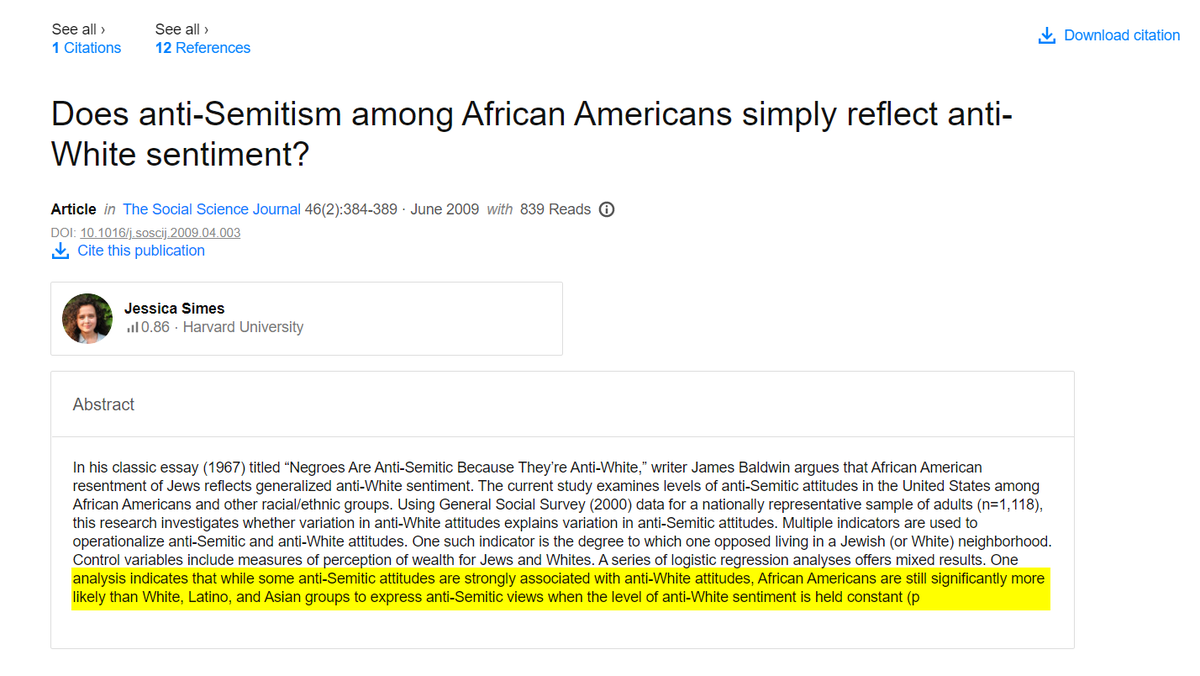Knowing what I know, I feel social liberal media and academia are wilfully gaslighting people at this stage. This is a thread full of data I& #39;ve compiled over years of general browsing/reading. Let& #39;s start with the radicalization across the New York Times& #39; output.
The cause? That& #39;s pretty clear too. The chart below is from Politico. Republican journalists are either being excluded or vanishing from national media at an alarming rate. Local news is increasingly an afterthought.
I& #39;d like to say this surge in divisive "SocJus" rhetoric is confined to the NY Times, but it isn& #39;t. Divisive and reductive racial and gender ideologies, all of which emanate from academia, are being injected into our national conversations across the social liberal news industry.
The data below was published by the Harvard Kennedy School’s Shorenstein Center and details the sentiment of coverage for Trump& #39;s first 100 days in office.
I& #39;d also like to believe we& #39;re dealing with *actual* liberals here, that the rhetoric comes from a place of good faith and is about more than just a calculated/learned strategy intent on dividing people for electoral/financial purposes. Sadly, this map makes me believe otherwise.
As does this former member of Antifa, who declares the organization is partly a “mating strategy” for “bored…and disaffected young men” to “show off their physical prowess”. ">https://youtu.be/nHdKxRAVr...
A similar "status" point has been made by Reihan Salam in The Atlantic: “it is about the supposed nobility that flows from racial self-flagellation” and a “code to be cracked”. https://www.theatlantic.com/ideas/archive/2018/08/the-utility-of-white-bashing/566846/">https://www.theatlantic.com/ideas/arc...
This isn& #39;t confined to "internet opinions". The shift in Democrats& #39; attitudes on a wide-range of issues over the last few years, starting *pre-Trump*, has been astronomical.
This radicalization, which is routinely conflated with "progress(ivism)", is likely having a pronounced effect on peoples& #39; empathy and ability to relate to one another. It also all seems to mirror the trend line that evidences the rise of social media.
While "neo-religious" rhetoric like "white privilege" scores Twitter points, it also decreases empathy for impoverished white people and does nothing to increase empathy for minorities. https://www.vice.com/en_ca/article/neazxq/the-disturbing-thing-i-learned-studying-white-privilege-and-liberals">https://www.vice.com/en_ca/art...
The former champions of the poor, “the left", are now more likely to be found racially disparaging them (and arguably for electoral gain). This would be less tragic if it weren& #39;t for the fact the group “white people” comprises more people in poverty than any other ethnic group.
This is likely partly why some have declared anti-racism to be a new religion. https://www.thedailybeast.com/antiracism-our-flawed-new-religion">https://www.thedailybeast.com/antiracis...
So, how big is the “progressive activist” faction? 8% of the American population. However, it has a disproportionate influence: its proponents are far more likely to earn over $100k than the average citizen and its also one of the “whitest” political factions in the country.
Contrary to popular perceptions, 2% of Republican voters earn over $250k per year (Democrats assume it& #39;s 44%). Those earning over $250k per year were 2:1 more likely to vote Clinton than Trump (Ipsos July 2016 Affluent Barometer).
This same group tends to predominate on Twitter and its views differ markedly from other Democrats. Furthermore, the echo chamber is strengthened by Democrats being 3x more likely than Republicans to unfriend someone due to political affiliation. http://fortune.com/2016/12/19/social-media-election/">https://fortune.com/2016/12/1...
According to Pew Research, and again contrary to popular perceptions, “very conservative” whites also tend to have more “diverse” friendships than “very liberal” whites.
Of course, the radicalization isn& #39;t confined to national media. As progressives takeover the orthodoxy and move further left, they increasingly characterize "the right& #39;s" position as extreme. Congress is following the trend.
The data also indicates Hollywood, another large component of the US cultural orthodoxy with influence on peoples’ perceptions, has gone along for the ride.
Across the social sciences, it& #39;s increasingly apparent there& #39;s a methodological problem, arguably motivated by bias, when it comes to analyzing “conservatives” or “liberal individualists”. https://nymag.com/intelligencer/2018/07/how-social-science-might-be-misunderstanding-conservatives.html">https://nymag.com/intellige...
I suspect, as per above, this is in large part due to academia being disproportionately populated by social liberals. In some social science fields (eg, social psychology), as many as 89% of academics identify as left-of-center, and 2.5% as right-of-center https://heterodoxacademy.org/new-study-finds-conservative-social-psychologists/">https://heterodoxacademy.org/new-study...
The same survey questioned whether respondents voted Obama/Romney: Obama 95%, Romney 1% and other 4% . Some studies put the overall left-right distribution across academia at 6:1 (in New England the ratio has gone from 2:1 in 1989 to 28:1 in 2014), others place it closer to 12:1.
Ideas like implicit bias, which have gone mainstream and been "commoditized" and sold as training across many sectors of society (turning some people rich in the process), are being found to have “no more explanatory basis than explicit bias”.
Diversity, alongside many other social justice issues, has been “commoditized”. The salary costs for diversity professionals at the Universities of Michigan and Texas alone are $11 million and $9.5 million respectively. https://www.city-journal.org/campus-diversity-bureaucracies-16223.html">https://www.city-journal.org/campus-di...
The bureaucracy now outnumbers faculty by 2:1 at public universities and 2.5:1 at private universities. The size of the bureaucracy and other social justice industries continue to increase as identity politics becomes ever more mainstream. https://www.city-journal.org/campus-diversity-bureaucracies-16223.html">https://www.city-journal.org/campus-di...
The social sciences are also facing a replication crisis and the recent Sokal Affair highlighted the simplicity with which identity politics pseudoscience masquerading as credible research can enter mainstream, peer-reviewed journals. https://www.theatlantic.com/science/archive/2018/11/psychologys-replication-crisis-real/576223/">https://www.theatlantic.com/science/a...
Despite these institutional problems, we’ve seen a surge in the number of young people going to college in recent years, rather than going straight into the workforce. In 2017 there were 19.6 million students in private and public colleges, up from 15.3 million in 2000.
The price of admission has also increased by nearly 400% in the last 30 years. We can debate the extent to which college influences young peoples’ political ideas, however there is no debate on the extent to which social liberal perspectives predominate. https://www.theatlantic.com/business/archive/2017/07/college-bubble-ends/534915/">https://www.theatlantic.com/business/...
Is this all an inverted "red scare"? Well, while America’s “straightforward bigotry has declined precipitously” (source: the Guardian, albeit infrequent), social liberals are seeing more of it than ever.
We& #39;re now all living a reality where some white Americans, in some contexts, see significantly more racism than non-white Americans.
UPDATE (more data):
The mainstream media& #39;s radicalization on identity issues (particularly around race) seems all the more pronounced when you consider the in-group racial bias among Hispanic, Black and Asian people is more pronounced than among even non-liberal "White people".
The mainstream media& #39;s radicalization on identity issues (particularly around race) seems all the more pronounced when you consider the in-group racial bias among Hispanic, Black and Asian people is more pronounced than among even non-liberal "White people".
I have no data on whether this replicates among liberals in foreign countries, but the pronounced *negative* in-group bias among liberal (progressive) "whites" strikes me as peculiar and particular to western countries. *If* positive in-group bias is the norm, it also sets...
...the stage for a very conflictual national conversation (this of course assumes the negative in-group bias is real rather than motivated by political aims). One possible explanation for this, which again runs contrary to popular beliefs or propaganda, is white progressives...
...are far less likely to read conservative news sources than whites conservatives are to read progressive news sources. That said, general observation also tells me progressive news is far more abundant than conservative news.
The progressive strategy for appealing to demographic shifts and racial collectivism also makes sense when you consider a strong predictor of Hispanics voting Democrat is perceived discrimination against Hispanics.
Even if there isn& #39;t racism, this data indicates there& #39;s *significant* incentive to create or prolong it. Also, there& #39;s a disincentive (for academics, politicians, journalists, etc.) to extend the responsibilities of social justice to minority groups. What perhaps adds further
validity to my earlier theory that social justice rhetoric is a political calculation not a moral imperative is the dearth of research into, or coverage on, minority-on-minority racism. Despite probably tens of thousands of papers on "White racism", there& #39;s very little on
racism by US Hispanics. The only real study I could find is from 2006. Despite the disconcerting findings from this study, I see next to no expressed concern about this in mainstream media, and perceive no inclination to research it.
UPDATE: I& #39;ve found data from 1992 and 2005 that not only confirms the existence of interminority prejudices, but that in many cases prejudices held or expressed among minorities are more prevalent than than those held or expressed among white people. https://twitter.com/JohnFMiller86/status/1199312396642336769">https://twitter.com/JohnFMill...
The survey from 1992, "Taking America& #39;s Pulse", contends:
"The truth is that minorities are more likely than whites to agree to negative stereotypes about other minority groups.
"It appears as if the more...burgeoning minority groups there are in society, the more prejudices
"The truth is that minorities are more likely than whites to agree to negative stereotypes about other minority groups.
"It appears as if the more...burgeoning minority groups there are in society, the more prejudices

 Read on Twitter
Read on Twitter
